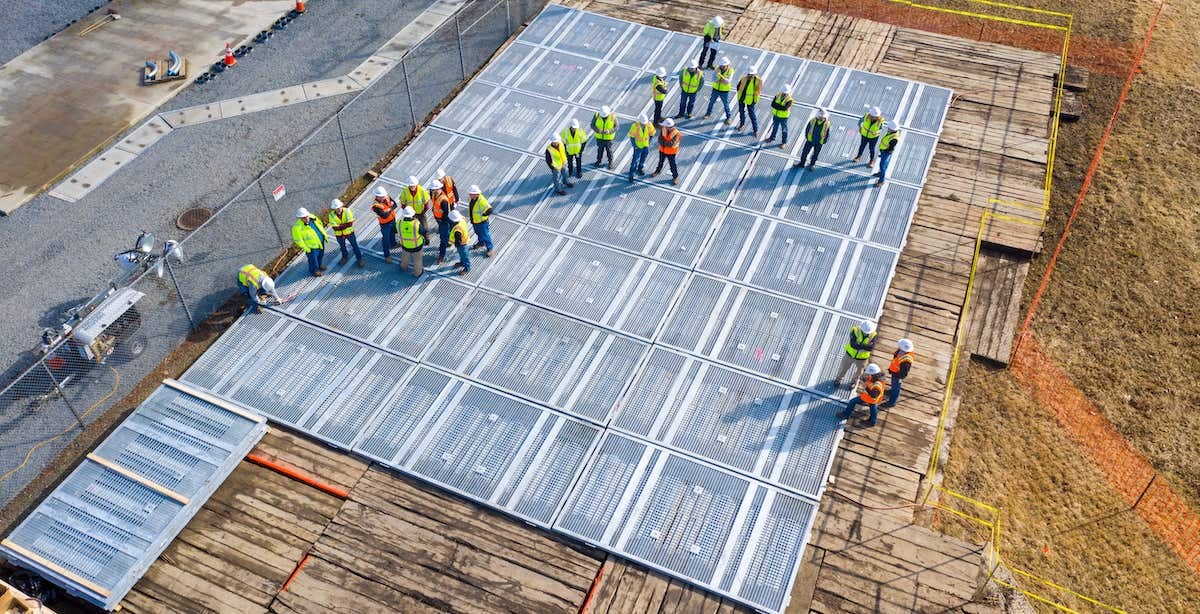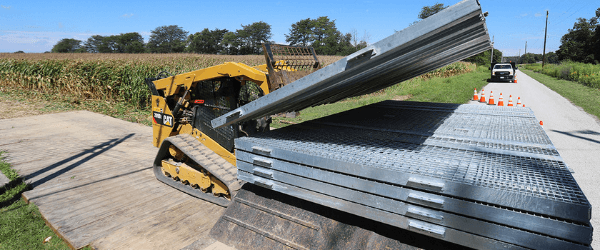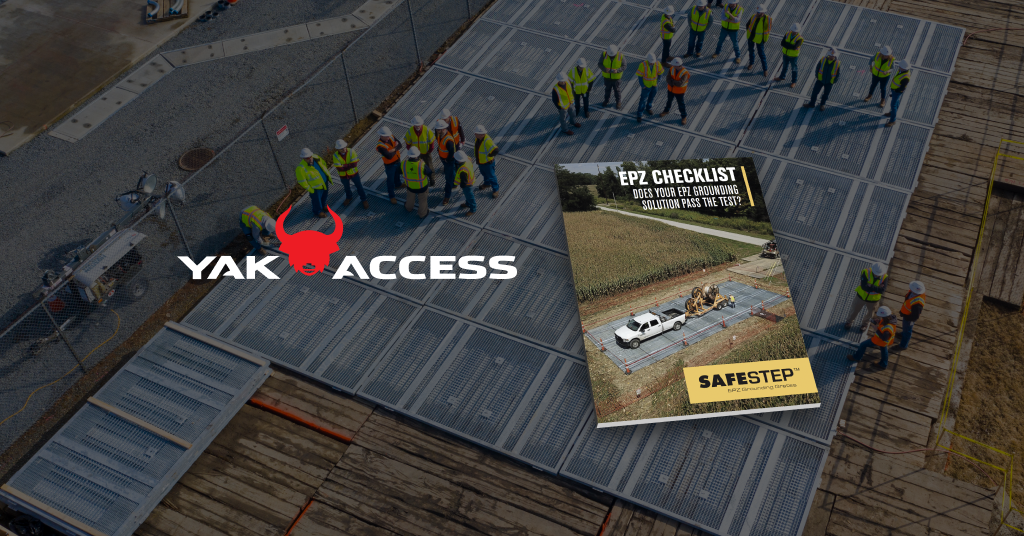A commitment to safety protocols when working on overhead power lines is essential for the safety of everybody on site.
The risks are obvious when high up in the air and close to power lines, with falling and electrical shock being the most serious. However, safety on the ground is just as important as it is overhead. Distance from power lines doesn’t necessarily mean the risks go away.
Power Line Safety Issues on the Ground
Understand all of the risks, and how to reduce them, when working on any component of a power line construction project, including on the ground.
Objects Falling
Overhead workers can drop tools, materials, and other objects when working above. Wearing hard hats in work zones is always a must, even if the risk feels relatively low.
Trip Hazards
When all the work is happening above, it’s not uncommon to walk while looking up. Trip hazards such as uneven surfaces and objects on the ground can turn a seemingly safe stroll into a medical event. Keep work areas tidy and free from debris. Use appropriate matting to set up flat work areas and make sure transition zones are as seamless as possible.
Electrical Shock
Although the wires are overhead, there is still a risk of shock to workers on the ground in the equipotential zone. Use grounding grates to create an equipotential bonded and ground work zone so workers can move freely without risk of electrical shock.

How to Mitigate Power Line Safety Issues
In addition to compliance with IEEE standards, use these tips to help reduce risks for your power line project.
1. Be Proactive
Start with a hazard assessment to determine the potential risks before bringing workers to the site. Create a plan before getting to the site to ensure you have everything you need to create a safe work zone. This might include installing a temporary road to get safely to and from the site. At the work zone, create an appropriately sized equipotential zone where workers and equipment can work safely.
2. Provide Training
Ensure that every person on site has been properly trained about power line safety and all of the potential hazards they might encounter. Understand the safe working distance for workers and equipment, and communicate it to everybody on site. This includes any stakeholders who visit the site in addition to the people working there on a daily basis.
3. Use the Right Materials
There are a number of ways to create an equipotential zone, but not all of them are equivalent. DIY methods come with the risk of incomplete coverage or trip hazards if the work surface isn’t flat. In addition to grounding grates, use non-conductive ladders and other materials to reduce the risk of electric shock. It’s also important to wear the right type of personal protective equipment, such as insulating sleeves and gloves.

4. Build Safety Measures into Your Budget
Power line safety is a top priority, and it should be incorporated into your budget. Although proper safety materials and EPZ grounding grates may be more expensive than DIY methods, the value of human safety cannot be overstated. Using world-class materials and methods not only helps protect workers but also keeps your projects on track and protects your brand’s reputation.
Protect Your Next Power Line Project with YAK ACCESS
When you work with YAK ACCESS for power line access solutions, we have you covered every step of the way. From creating smooth access roads on remote sites to helping workers operate safely on the ground, we provide customized solutions to meet the unique needs of your projects.
Learn more about EPZ Grounding Grates and how they work—including a safety checklist—in our free SAFESTEP EPZ Solutions Package.

